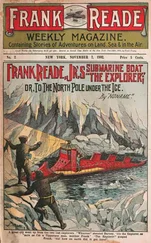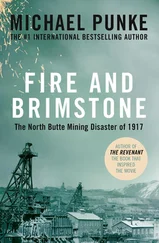George Bryce - The Siege and Conquest of the North Pole
Здесь есть возможность читать онлайн «George Bryce - The Siege and Conquest of the North Pole» — ознакомительный отрывок электронной книги совершенно бесплатно, а после прочтения отрывка купить полную версию. В некоторых случаях можно слушать аудио, скачать через торрент в формате fb2 и присутствует краткое содержание. Жанр: foreign_antique, foreign_prose, на английском языке. Описание произведения, (предисловие) а так же отзывы посетителей доступны на портале библиотеки ЛибКат.
- Название:The Siege and Conquest of the North Pole
- Автор:
- Жанр:
- Год:неизвестен
- ISBN:нет данных
- Рейтинг книги:5 / 5. Голосов: 1
-
Избранное:Добавить в избранное
- Отзывы:
-
Ваша оценка:
- 100
- 1
- 2
- 3
- 4
- 5
The Siege and Conquest of the North Pole: краткое содержание, описание и аннотация
Предлагаем к чтению аннотацию, описание, краткое содержание или предисловие (зависит от того, что написал сам автор книги «The Siege and Conquest of the North Pole»). Если вы не нашли необходимую информацию о книге — напишите в комментариях, мы постараемся отыскать её.
The Siege and Conquest of the North Pole — читать онлайн ознакомительный отрывок
Ниже представлен текст книги, разбитый по страницам. Система сохранения места последней прочитанной страницы, позволяет с удобством читать онлайн бесплатно книгу «The Siege and Conquest of the North Pole», без необходимости каждый раз заново искать на чём Вы остановились. Поставьте закладку, и сможете в любой момент перейти на страницу, на которой закончили чтение.
Интервал:
Закладка:
CHAPTER II
KANE’S EXPEDITION (1853, ’54, ’55)
In December 1852, Dr. Kane received orders from the Secretary of the U.S. Navy to conduct an expedition to the Arctic seas in search of Sir John Franklin. Dr. Kane’s plan of search was based upon the probable extension of the land-masses of Greenland to the Far North – a fact at that time not verified by travel, but sustained by the analogies of physical geography. As inducements in favour of his scheme, he mentioned —
“(1) Terra firma as the basis of our operations, obviating the capricious character of ice-travel.
“(2) A due northern line, which, throwing aside the influences of terrestrial radiation, would lead soonest to the open sea, should such exist.
“(3) The benefit of the fan-like abutment of land, on the north face of Greenland, to check the ice in the course of its southern or equatorial drift, thus obviating the great drawback of Parry in his attempt to reach the Pole by the Spitzbergen Sea.
“(4) Animal life to sustain travelling parties.
“(5) The co-operation of the Esquimaux; settlements of these people having been found as high as Whale Sound, and probably extending still farther along the coast.
“We were to pass up Baffin’s Bay, therefore, to its most northern attainable point; and thence, pressing on toward the Pole as far as boats or sledges could carry us, examine the coast-lines for vestiges of the lost party.”
Kane left New York on the 30th May 1853, in the Advance , a “hermaphrodite brig of 144 tons.” The entire party numbered eighteen. At Fiskernaes, Greenland, he engaged Hans Christian, aged nineteen, as an Esquimaux hunter.
The pack was encountered in Melville Bay on 28th July, and Kane was fortunate in passing through to the North Water by 4th August. Smith Sound was entered on 7th August. A boat with a stock of provisions was buried at the north-east point of Littleton Island, and a cairn was erected on the western cape. About 40 miles north of Littleton Island the ice was met, and the Advance was forced into Refuge Harbour. After a great deal of warping, the brig reached Rensselaer Harbour in latitude 78° 37′.
When Kane attained the latitude of 78° 41′, he made a curious observation. He states: “We are farther north than any of our predecessors, except Parry on his Spitzbergen foot-tramp.” This was far from the truth. Much higher latitudes had been reached centuries before. In the seventeenth century both the English and Dutch had reached a higher latitude in the Spitzbergen Sea: Tschitschagoff in 1765 reached 80° 21′; Phipps in 1773 reached 80° 37′; and Scoresby in 1806 reached 81° 12′ 42″. Had Kane’s statement been confined to the route between Greenland and America, it would have been correct, but referring as he did to Parry’s Spitzbergen voyage, he was entirely astray.
When Smith Sound was reached, Kane had more than fifty dogs, but many of them soon died. Preparations for the winter were made without delay: a storehouse was formed on a small island in the harbour; an observatory was built on another island; and a deck-house was made to protect the Advance .
Arrangements were then made to form provision-dépôts along the Greenland coast for the purpose of northern exploration. The first dépôt party left on the 20th of September, and returned on the 15th of October. On the 25th of September this party reached Cape Russell, where the first cache of pemmican, together with some bread and alcohol for fuel, was made. A second cache was made at Cape Bonsall, about 30 miles to the north-east of the first dépôt. They reached their highest latitude, 79° 50′, on 6th October. A third cache was placed on a low island near the Humboldt Glacier.
A sunless winter of one hundred and forty days now closed upon them. The influence of the long, intense darkness was found most depressing. Most of the dogs died during this winter from convulsions. The temperature went down to as low as 68° F. below zero during February. The dreadful scurvy made its appearance, and by the middle of March only two members of the party were free of it. The supplies of the expedition were found to be altogether inadequate, both as regard provisions and fuel. On the 19th of March 1854, the first spring party left the brig, with the object of forming more dépôts. The temperature was about 40° F. below zero. On 31st March three of this party made their appearance at the brig unexpectedly. Kane graphically describes the incident: “They were swollen and haggard, and hardly able to speak. Their story was a fearful one. They had left their companions in the ice, risking their own lives to bring us the news: Brooks, Baker, Wilson, and Pierre were all lying frozen and disabled. Where? They could not tell: somewhere in among the hummocks to the north and east: it was drifting heavily round them when they parted. Irish Tom had stayed by to feed and care for the others; but the chances were sorely against them. It was in vain to question them further. They had evidently travelled a great distance, for they were sinking with fatigue and hunger, and could hardly be rallied enough to tell us the direction in which they had come. My first impulse was to move on the instant with an unencumbered party: a rescue, to be effective or even hopeful, could not be too prompt. What pressed on my mind most was, where the sufferers were to be looked for among the drifts. Ohlsen seemed to have his faculties rather more at command than his associates, and I thought that he might assist us as a guide; but he was sinking with exhaustion, and if he went with us we must carry him. There was not a moment to be lost. While some were still busy with the newcomers and getting ready a hasty meal, others were rigging out the ‘Little Willie’ with a buffalo-cover, a small tent, and a package of pemmican; and, as soon as we could hurry through our arrangements, Ohlsen was strapped on in a fur bag, his legs wrapped in dog-skins and eider-down, and we were off upon the ice. Our party consisted of nine men and myself. We carried only the clothes on our backs. The thermometer stood at −46°, 78 degrees below the freezing-point. A well-known peculiar tower of ice, called by the men the ‘Pinnacly Berg,’ served as our first landmark: other icebergs of colossal size, which stretched in long beaded lines across the bay, helped to guide us afterward; and it was not until we had travelled for sixteen hours that we began to lose our way. We knew that our lost companions must be somewhere in the area before us, within a radius of 40 miles. Mr. Ohlsen, who had been for fifty hours without rest, fell asleep as soon as we began to move, and awoke now with unequivocal signs of mental disturbance. It became evident that he had lost the bearing of the icebergs, which in form and colour endlessly repeated themselves; and the uniformity of the vast field of snow utterly forbade the hope of local landmarks.
“Pushing ahead of the party, and clambering over some rugged ice-piles, I came to a long level floe, which I thought might probably have attracted the eyes of weary men in circumstances like our own. It was a light conjecture; but it was enough to turn the scale, for there was no other to balance it. I gave orders to abandon the sledge, and disperse in search of footmarks. We raised our tent, placed our pemmican in cache, except a small allowance for each man to carry on his person; and poor Ohlsen, now just able to keep his legs, was liberated from his bag. The thermometer had fallen by this time to −49.3°, and the wind was setting in sharply from the north-west. It was out of the question to halt: it required brisk exercise to keep us from freezing. I could not even melt ice for water; and, at these temperatures, any resort to snow for the purpose of allaying thirst was followed by bloody lips and tongue: it burnt like caustic.
Читать дальшеИнтервал:
Закладка:
Похожие книги на «The Siege and Conquest of the North Pole»
Представляем Вашему вниманию похожие книги на «The Siege and Conquest of the North Pole» списком для выбора. Мы отобрали схожую по названию и смыслу литературу в надежде предоставить читателям больше вариантов отыскать новые, интересные, ещё непрочитанные произведения.
Обсуждение, отзывы о книге «The Siege and Conquest of the North Pole» и просто собственные мнения читателей. Оставьте ваши комментарии, напишите, что Вы думаете о произведении, его смысле или главных героях. Укажите что конкретно понравилось, а что нет, и почему Вы так считаете.












